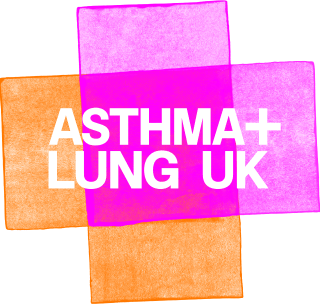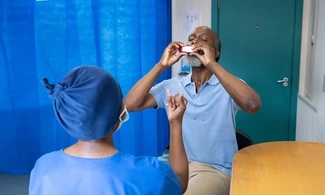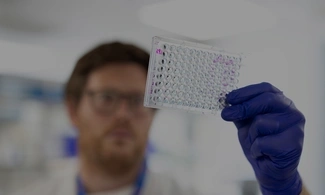I was diagnosed with interstitial lung disease when I was 34.
Around two months after I ran a half marathon, I started feeling really out of breath. The symptoms came really quickly. I would do simple daily tasks and I'd feel really breathless. I was climbing the stairs to the train platform on my way to work, but I was completely out of breath.
It’s ironic that I was probably the fittest I’d ever been when I first noticed the symptoms of my lung condition.
The diagnosis was a shock
It took an incredibly long time to get a diagnosis, despite how debilitating my breathing problems became. My doctor sent me for tests to rule out asthma, but then I had to go private to get a CT scan. It took 18 months after I first noticed symptoms to diagnose interstitial lung disease with diffuse systemic sclerosis, which is an incurable autoimmune condition.
The news was a massive shock. I worried about how I could carry on living a life that I loved, and if my wife and I could start a family. There’s nothing worse than the unknown – having a speedier diagnosis would have taken away much of my worry.
People don't understand the reality of lung conditions
Having to give up sports had a massive impact on me. My condition isn’t common, and it can be hard to know where to turn for support. Lung disease is a hidden disability – I look perfectly well until I struggle to breathe. People don’t understand the reality of lung conditions until it happens to a loved one.
I felt isolated, as sport was the focus of my social life. I wanted to bring normality back to my life, my normal, and my normal was being the active person that I always have been, so I had to look into ways to do that again and one of those ways was speaking to the right people, getting the right advice.
Asthma + Lung UK have supported me so much that it's helped me achieve the things that I never thought I'd be able to do. Going onto steroids and immunosuppressants stabilised my lung function and I now go to the gym regularly. I’ve got a personal trainer who understands my condition and I use an oxygen machine when I exercise.
I've been able to achieve things I never thought I'd be able to
I ran the London Marathon in 2026. From the moment I knew I had a place, I didn’t know whether to feel frightened or excited. The training was hard and sorting out the oxygen machine logistics was difficult. The training day set up by Asthma + Lung UK really helped with my preparation, as did my colleagues and friends. Taking part in the actual marathon was surreal - the buzz, excitement and nerves all kicking in at once. It was an amazing day; other runners were coming up to me telling me how amazing I was doing and had so many words of encouragement. One person even said "Can I take a selfie with you to show my friend who has a lung condition to show her anything is possible?" Nothing will beat the feeling of crossing the finish line. My first thought was that I'm happy and proud of what I done and I've made everyone who supported me - family, friends and everyone who donated (some of who I don't even know) - proud.
A better future ahead
Exercise has helped me manage my condition a lot better. I feel a lot more confident going out with friends, family, or even going to work. And now with the oxygen machine, it helps me do everything that I want to do. The biggest achievement in my journey has to be the amount of awareness I have raised through talking to people. I was featured in the Metro, the Evening Standard, The Insider and IG Global News which all went viral! I have also raised £20,000 for Asthma + Lung UK and my initial target was only £2,000, and encouraged others to participate in the London Marathon. Everyone has been asking me what’s next. Who knows? Time will tell but my work is not done. Losing control over your future is hard but I won’t let lung disease beat me.
There are lots of ways to keep active with your IPF in a way that’s manageable for you. Check out our Keep Active programme. It's specially designed for people with lung conditions, with tips and advice on how to move safely. Diven features too!










